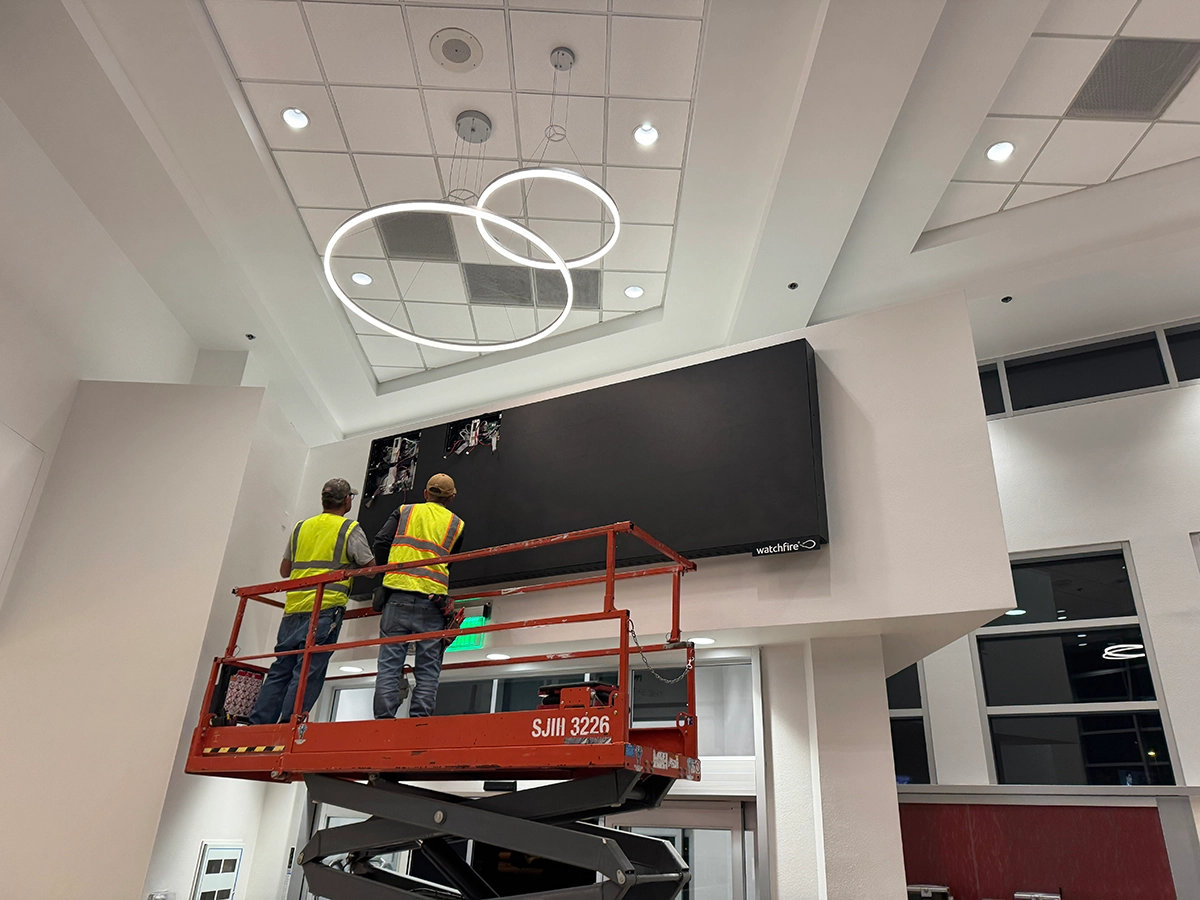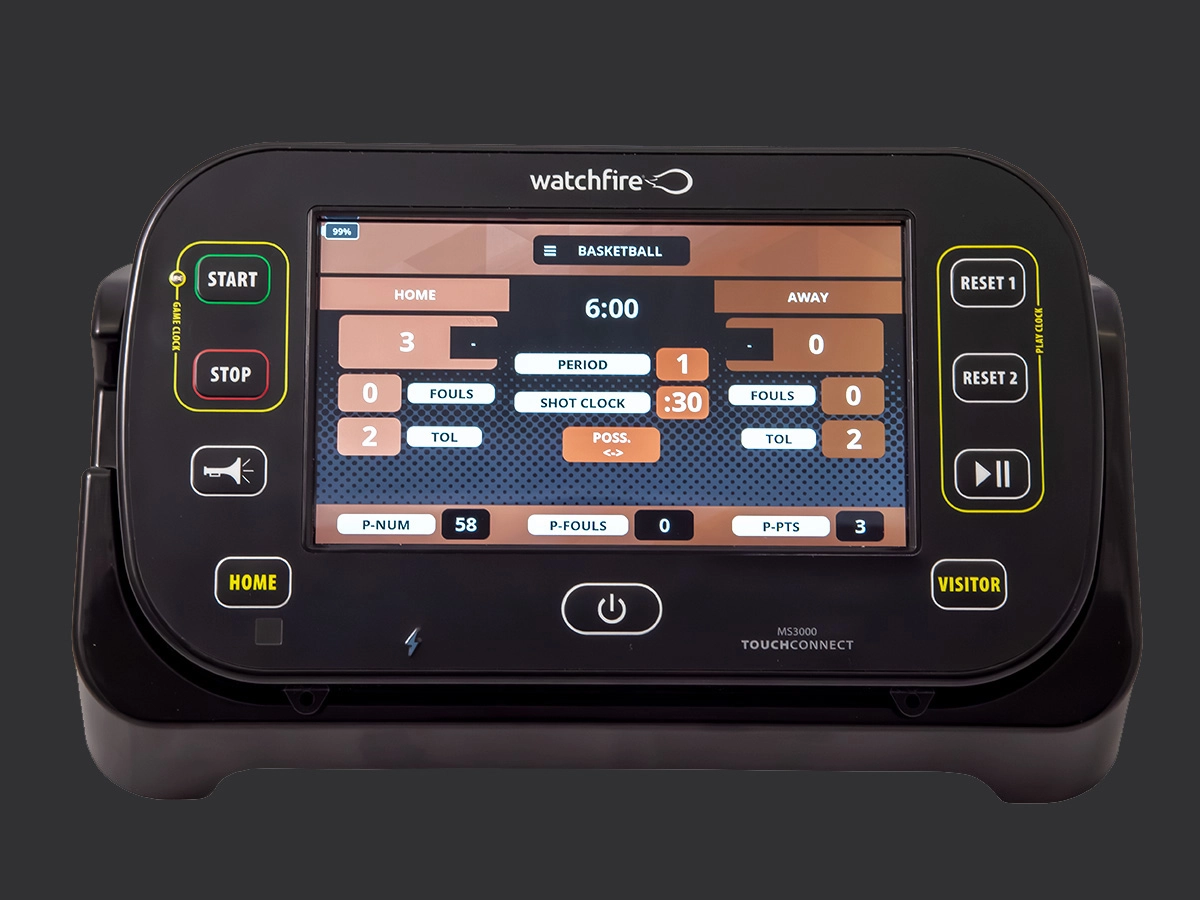Blog
Factors to Consider for Indoor LED Video Wall Installations
November 5, 2025

Watchfire indoor LED display walls make a strong visual statement in any space, whether you’re designing a corporate lobby, outfitting a church stage, or upgrading a retail environment. But behind the seamless visuals and vibrant color lies a critical foundation of intelligent planning and system integration.
From initial planning to final execution, Watchfire is committed to maximizing your indoor LED display investment. Follow these six essential factors for a seamless, successful installation:
Power Requirements
Power serves as the foundation for any LED display, and overlooking electrical needs early on can result in costly issues later. Power demands can significantly differ based on screen size, brightness, and usage patterns. For instance, a large, high-brightness screen might require a power draw beyond what your current infrastructure is designed to support. In critical environments, having redundancy with dual power supplies or Uninterruptible Power Supply (UPS) systems is highly advisable. Additionally, lengthy cable runs can impact performance, so it’s crucial to include proper cabling and load balancing in your initial discussions with the LED manufacturer and your electrical contractor.
Watchfire Tip: Always verify power specifications in advance and ensure your infrastructure, including breakers, outlets, and cooling fans, can accommodate them.
Mounting and Structural Support
A seamless video wall begins with a perfectly aligned and structurally sound mounting solution. High resolution indoor direct-view LED panels require extremely flat, rigid surfaces to maintain alignment and visual uniformity. If your wall isn’t perfectly level, consider using a freestanding or custom-framed support structure. Precision mounting systems are crucial, especially for larger installations where minor misalignments can become noticeable. Planning for vibration resistance and long-term stability is particularly important in high-traffic or dynamic environments.
Watchfire Tip: During setup, employ laser alignment tools and consider using anti-vibration materials if the display is positioned near areas with heavy foot traffic or machinery.
Front and Rear Access
From the outset, it’s crucial to consider access for service and maintenance, rather than viewing it as an afterthought. Many LED displays, such as Watchfire’s S-Series and X-Series Displays, are designed for front access, enabling technicians to remove and replace components from the front. This setup is particularly advantageous in cramped spaces or flush wall installations. In contrast, rear access necessitates sufficient clearance behind the display (generally at least three to four feet). Those are commonly used in control rooms or situations where displays are housed in specialized AV enclosures. Regardless of the type of access you choose, incorporating cable management into your design strategy is crucial to facilitate easier future service calls.
Watchfire Tip: Select a display (like Watchfire’s) that allows for magnetic, tool-free module replacement or includes built-in diagnostics.
Airflow and Heat Management
LED displays are highly efficient, but proper thermal management is crucial for reliable operation. During the design phase, it’s important to plan installations with effective cooling to ensure consistent performance and extend component life. Factors such as placement, surrounding structures, and airflow should be assessed. Incorporating thoughtful placement strategies early in the architectural and electrical planning process helps guarantee dependable performance and long-lasting visual quality.
Watchfire Tip: Collaborate early with HVAC and electrical engineers to incorporate airflow paths or active cooling systems if the display is recessed or enclosed. This promotes effective heat management without sacrificing design aesthetics or accessibility for maintenance.
Cable Routing and Connectivity
An organized and dependable cabling setup creates tidy visuals and enhances system reliability for indoor LED displays. It’s essential to carefully route signal and power cables to accommodate the system’s resolution and refresh rate. Whether you’re using HDMI, SDI, or fiber, you must match cable length and quality to your performance requirements. Consider the positioning of your video processor and control system in advance: will they be wall-mounted, situated in an equipment rack, or controlled remotely? Implementing redundancy in signal paths and maintaining labeled, documented wiring layouts are minor aspects that greatly assist during troubleshooting or future expansions.
Watchfire Tip: Label both ends of each cable and photograph your cabling before closing walls or structures.
Long-Term Service and Upgradability
An indoor LED video wall is a long-term investment, so planning for future maintenance and potential upgrades is a smart strategy. Seek displays that facilitate tile-level service, as this expedites repairs and diminishes downtime. Additionally, it is prudent to ensure access to supplementary tiles from the same production batch during installation and operating life. Watchfire’s 10-year replacement parts availability accounts for this necessity, extending the life of the display with uniform color and brightness performance. In addition to the hardware, keep your control systems updated with the latest firmware and software; many issues can be resolved remotely through improved diagnostics and management tools.
Watchfire Tip: Partner with Watchfire and Watchfire authorized display dealers and AV integrators for the best post-installation support and replacement parts availability.
The Big Picture Takeaway
Installing an indoor LED display wall isn’t just about visual impact; it involves careful planning, infrastructure alignment, and intelligent serviceability. From power and mounting to performance and long-term maintenance, every detail is crucial in creating a display that operates beautifully for years. If you’re planning a new indoor LED installation, the Watchfire team is ready to assist with system design, site planning, and execution, ensuring your vision transforms into a reliable and stunning display solution. Contact us now to start planning.
